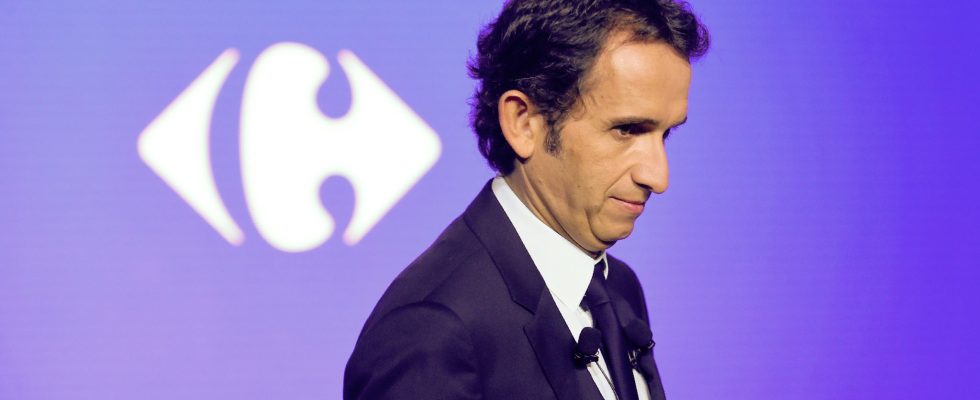In the storm that Casino is currently going through, we would have almost forgotten the other players in the large distribution. Two weeks to the day before the review of the Saint-Etienne group’s takeover offers by the Paris Commercial Court, Carrefour decided to strike a blow on July 12. The number 2 in the sector in France has announced the acquisition of the Cora and Match brands from the Belgian group Louis Delhaize, for an undisclosed amount. This takeover values all the assets at 1.05 billion euros.
Sixty hypermarkets and 115 supermarkets will thus come to fill its store base in France, with an increased presence in the North and the Great East. In difficulty three years ago, the group chaired by Alexandre Bompard thus intends to follow the leader Leclerc and its 22.4% market share – against 19.9% for Carrefour. For Olivier Mevel, lecturer in management sciences at the University of Western Brittany, Carrefour is carrying out an excellent operation here which will allow it to extend its network and consolidate its position as a challenger.
L’Express: Are you surprised by the announcement of this operation?
Olivier Mével: No. I was much more surprised that Carrefour did not rush to Casino’s bedside. Now we understand why. He was simply completing his biggest acquisition in twenty years in France. Before hearing the news, I was thinking the following: didn’t Carrefour miss a golden opportunity with the takeover of 180 Casino stores? Perhaps Carrefour did not want to raise prices with Intermarché. We know very well that Jean-Charles Naouri has always been to his advantage in this context. They preferred not to overbid and carry out another operation, which was very interesting for them.
What is Carrefour aiming for with this acquisition?
Today, the French eat 50 more meals out of the home every year than in the 2000s. Large retailers are going through a tormented period and are unable to counter the hellish pace led by out-of-home catering (RHD ). It is this match that weighs the most on the Large and Medium Surfaces (GMS). There were structural conditions for Casino’s descent into hell. It’s always the weakest link that lets go.
Behind, there is Cora which presents mediocre results in recent years. It is logical that this context leads to a consolidation of the sector. I consider this to be a godsend for Carrefour, which will gain 2.5% market share and thus get back in line with Leclerc. This operation would not have been possible three years ago and Alexandre Bompard was able to restore financial margin to Carrefour.
Does this takeover present any risks?
In this operation, it should not be forgotten that Carrefour is also acquiring 24,000 employees. I am very worried about the employees of the Cora and Match headquarters, based in Île-de-France. There will be duplicates, which will lead to voluntary departures and retirement, knowing that Carrefour is already coming out of a social plan. It is therefore preparing to make fairly significant economies of scale.
Carrefour will find itself with 60 more hypermarkets in its fleet, which already has 185, while more than half of them would be in deficit and the death of this model is announced. How to explain this choice?
All observers have forgotten one thing: it is the logistics that determine the final price of the product in store. Buying a regional distributor as concentrated as Cora, with very low delivery costs, is an advantage. It’s a takeover that makes sense operationally: the truck load factor will be better and the number of empty kilometers traveled lower.
We announce the death of this model, of course, but it still weighs 100 billion euros per year. Hypermarkets still represent 50 to 55% of distributors’ turnover, while e-commerce is currently leveling off in food. The drive has progressed a lot, but it’s now over. The great battle for distributors is to keep the middle class, and the latter is still going hyper.
Does Carrefour have an interest in switching the Cora and Match stores under its own brand, when they are recognized brands in the territories where they are established?
You take Cora in the west of Rennes, in Montgermont: it is completely isolated. Lots of people don’t go there precisely because it’s Cora and it’s a bit old. Carrefour must invest to renovate these hypermarkets. Then, many customers will return to the Cora de Montgermont when it is refurbished and renamed Carrefour. Failure to impose his mark would be a management fault on the part of Alexandre Bompard.
With this strategy, could Carrefour return to the level of Leclerc?
Three years ago, Carrefour was in such a state that it was ready to give itself to a Quebec gas station attendant, Couche-Tard, which made half the turnover than it did. Carrefour can now thank inflation. The hypermarkets had a good year in 2022 and will continue this momentum in 2023. But in reality, it is not a match between Leclerc and Carrefour, because Leclerc is not very present in the Grand Est. Number 1 must above all contain competition from Lidl and Grand Frais.
Could industry concentration continue?
Today, Leclerc, Lidl and Intermarché are working hard. If you look at the list of different groups, it is now Auchan’s turn to become the weak link. This is the brand with the ugliest stores and the lowest profitability. In addition, it is a family shareholding where everyone will want to make the most of the game and obtain the maximum.
Already, the butchering of Auchan, which weighs more than 8% market share, is on the table. Faced with suppliers, three very large brands will lead the way, and next door, System U will continue to manage its particularity of being independent. A very significant price differential is likely to widen for Auchan, which I doubt it can resist.
